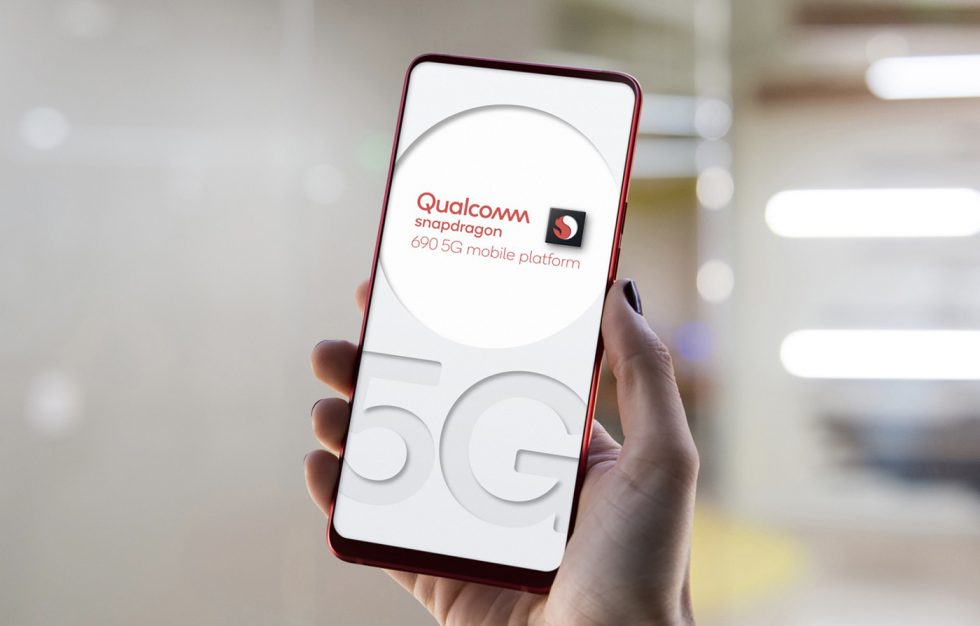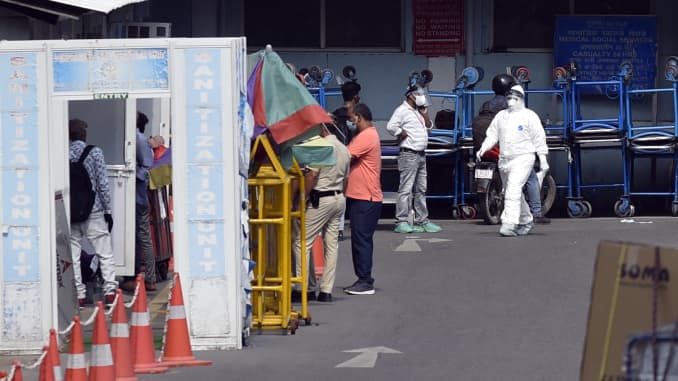
‘A new and dangerous phase’: W.H.O. issues a dire warning as cases grow in 81 countries. the coronavirus pandemic is accelerating, and noted that Thursday was a record day for new cases — more than 150,000 globally. ........ “Many people are understandably fed up with being at home. Countries are understandably eager to open up their societies and their economies. But the virus is still spreading fast. It is still deadly, and most people are still susceptible.” .......... 81 nations have seen a growth in new cases over the past two weeks, while only 36 have seen declines. .......... continue to maintain distance from others, to cover their noses and mouths with masks when appropriate and to wash their hands .......... nations must continue to find, isolate, test and care for every person infected with the virus, and to test and quarantine every contact .......... In India, which initially placed all 1.3 billion of its citizens under a lockdown — then moved to reopen even with its public health system near the breaking point — officials reported a record number of new cases Wednesday. And the virus is now spreading rapidly in nearby Pakistan and Bangladesh as well. ........... It took Africa nearly 100 days to reach 100,000 cases, the W.H.O. has noted, but only 19 days to double that tally. ......... Scientists generally agree that wearing face masks can help curb the spread of the virus. For politicians and businesses, however, the decision of whether to require masks is growing increasingly contentious ............ Trump’s rally has the potential to become a “super spreader” event ............. Italian scientists report traces of virus in sewage samples collected in December. ................ by the time the authorities were aware of an outbreak, the virus was already more widespread than initially believed. ............ South Korea reported 49 more cases, as a second wave of infections continued to spread in the Seoul metropolitan area. ........... Gov. Andrew M. Cuomo ended his run of more than 100 consecutive daily news conferences ............ in the race to find drugs and vaccines, a substantial proportion of studies may be excluding older subjects, purposely or inadvertently, even as 80 percent of American deaths have occurred in people over age 65. ............... There is a long history of older people being excluded from clinical trials, even when the diseases in question disproportionately affected this group. .......... the new outbreak in the Chinese capital, a cluster of more than 180 infections at the vast Xinfadi wholesale market that emerged after 56 days of no new locally-transmitted cases. .......... prevent “splash contamination” by not rinsing raw meat or seafood directly under the tap. ......... seafood vendors at the Xinfadi market had suffered the most infections and showed symptoms earlier than those who sold beef and lamb. ............ low temperatures and high humidity in the seafood and meat areas may have contributed to the virus’s spread
SpaceX Wants to Build Floating Spaceports for Daily Starship Launches The coronavirus pandemic stopped a lot of things, but it hasn’t done much to slow down SpaceX and Elon Musk. ........... The offshore platforms would serve primarily to launch the company’s massive Starship rockets, which are being built and tested in Brownsville, a small city in southern Texas near the border with Mexico. ........... At 394 feet tall by 30 feet wide, the rocket outsizes all those previously used in spaceflight, including the Saturn V used in NASA’s Apollo program. But the most impressive feature of the Starship, which consists of a 160-foot spacecraft plus a 230-foot booster, is that it’s being designed to be fully reusable. Last November Musk estimated Starship launches could cost as little as $2 million, which is about 1 percent of what NASA launch costs average. .......... the launches and landings had to be “far enough away so as not to bother heavily populated areas.” The company’s plan to eventually carry out up to three launches and landings per day would certainly necessitate putting some serious distance between the launch site and people; most of us could only handle about one sonic boom a month, if that. ............. Rather than building the launchpads from scratch, it’s possible SpaceX would refurbish existing oil rigs; the bigger rigs are about the size of two football fields, and there are plenty of them in the Gulf of Mexico .......... Given the ailing state of the oil industry, especially after the pandemic, it’s likely there will be rigs to be had for cheap.
India shut down its economy to contain the coronavirus. It’s now one of the most affected countries India is the fourth worst-hit nation in the world, with cumulative infection numbers over 320,000 — behind only the United States, Brazil and Russia .......... some saying their loved ones died on the doorsteps of medical centers that refused to take them in .......... “Last two, three weeks have seen a very significant increase in the number of cases every day” ......... many districts are now demarcated into low-risk and high-risk zones. In low-risk areas, economic activity is resuming slowly, while the high-risk zones activities remain restricted. ......... has been appealing to people not to think “everything has returned to normal” — just because the lockdown has officially ended. He cautioned against “moving out and mingling in large numbers.” ....... He also implored people to wear face masks if they have to step outside and maintain social distancing. “Presume every other person to be infected and maintain at least a meter distance from them,” he said, adding that people should keep washing their hands as frequently as possible. .......... Gross domestic product grew 3.1% in the three months between January to March — reportedly the slowest pace in at least eight years. The situation is expected to deteriorate further in this quarter. ......... India’s top 5 states accounting for 68% of daily new cases compared to around 80% in mid-May ......... Maharashtra remains the worst affected Indian state, with its latest cumulative cases at 104,568......... “Even as confirmed cases would likely rise further, continued improvement in recovery rate and a low mortality rate would be key factors for the economy to open up as India ‘learns’ to live with the virus.”
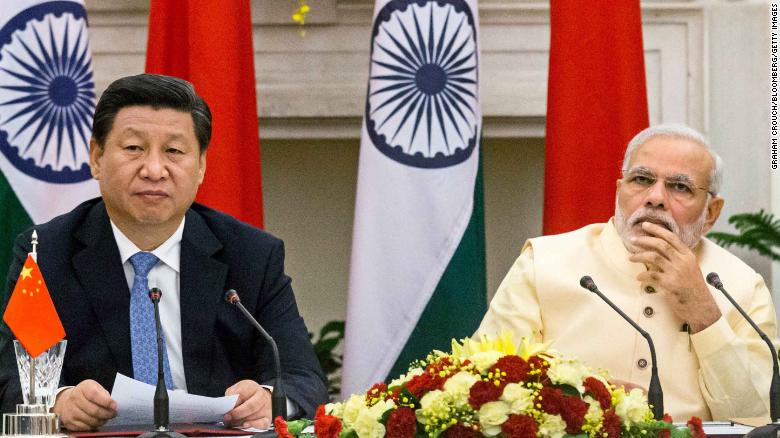
A border dispute with China may push India closer to some of Beijing's top rivals During British colonialism, India was the source of opium foreign traders forced onto Chinese markets, sparking war between the UK and the Qing Empire that ended in humiliation for China. ............ This week, that border blew up into renewed conflict, in the bloodiest engagement in 40 years, which left more than 20 soldiers dead after a brutal fight with fists and clubs high in the mountains amid freezing temperatures and scant oxygen. ............ While both governments are now scrambling to deescalate, the conflict could provide the final push for a pivot already begun by New Delhi, away from Beijing and towards China's traditional rivals, the United States and Japan, as well as a growing regional one, Australia. As India seeks to push back against what many in the country view as Chinese aggression, it will rely on these allies more than ever. .............. "China wants to limit New Delhi's power and ambition; it wants India to accept Beijing's primacy in Asia and beyond." .......... New Delhi should "double down on its partnership with the US, make Quad ... a more permanent arrangement, and be a part of any club that seeks to contain Chinese power." ....... US, Japan, Australia and India ....... While not a formal military alliance like NATO, it is seen by some as a potential counterweight to growing Chinese influence and alleged aggression in Asia-Pacific. ......... Potentially, an anti-China bloc led by the US could be far larger than the Quad. ........... Greater Indian participation in both the Quad and other military alliances with the US would have benefits for Washington ......... "India's strong foothold in the Indo-Pacific provides a counterbalance to China's growing footprint in the Indian Ocean." ......... the latest conflict could "portend the development of a Sino-Indian situation that reflects an 'ugly stability' between India and Pakistan: persistent low-level conflicts and political-military crises that simmer below the threshold of conventional war." ............. Together, the two countries account for 17.6% of the global economy. But although China is India's largest trading partner, their estimated $84 billion bilateral trade in 2017/18 was a mere fraction of the US-China trade volume, which stood at almost $600 billion. ............ Between 2008 and 2017, Islamabad purchased more than $6 billion of Chinese arms ........... China has also invested billions in the China-Pakistan Economic Corridor, an integral part of Xi's Belt and Road trade and infrastructure mega-project. .............. China has made diplomatic and economic inroads in countries traditionally considered as within Delhi's sphere of influence, including Nepal, Sri Lanka and Bangladesh. ........... The willingness of Nepal, in particular, to work with Beijing has led to concerns in Delhi of potential geopolitical realignment. Nepal, which is sandwiched between India and China, and has recently butted heads with its southern neighbor over a decision to approve a revised map that includes areas claimed by Delhi. .......... If relations continue to worsen between Beijing and Delhi, however, they may seem like nothing compared to the nightmare of geopolitical complications that could arise across all of Asia-Pacific.

Reset ties with China Beijing crossed a threshold. India must be strong With its aggression in the Galwan Valley, Ladakh, China has crossed a threshold and pushed the relationship with India to a dangerous low, with long-lasting consequences. Chinese soldiers used the opportunity of a negotiated withdrawal operation to viciously attack a supervisory Indian contingent. .............. it is clear that China — under President Xi Jinping — believes the time has come to assert its power on the international stage. This has translated into China violating international norms and law (South China Sea); engaging in predatory, almost colonial, economic practices (Belt and Road Initiative); being brazen, rather than introspective and transparent, about its role in causing crises with global impact (the coronavirus pandemic); encroaching upon the sovereignty and territorial integrity of neighbours (Japan and India); intervening in the politics of democracies (from European nations to Australia); exporting its own ideological worldview to other countries (especially in South Asia); and becoming even more repressive at home (Xinjiang, Tibet and Hong Kong) . ............. it wants to impose costs on India for deepening ties with the United States (US); and it wants to continue using Pakistan, which has now becoming almost its client State with the China-Pakistan Economic Corridor, to inflict terror on India. ............ making it clear to Beijing that its intervention will lead to heavy costs across all spheres of the relationship .......... the possibility of inflicting costs on China in other theatres (including business and trade) while keeping the conflict within limits. It must also mobilise international opinion to expose Chinese aggression at a time when a humanitarian, economic and health crisis (originating in China) has engulfed the world. .......... India should consider taking a stronger position on Tibet. It must double down on its partnership with the US, make Quad (which also includes Japan and Australia) a more permanent arrangement, and be a part of any club that seeks to contain Chinese power. India needs to economically re-examine its trade, technology and investment ties with China, for all these appear to have benefited Beijing more than Delhi. It needs to ramp up its military modernisation, identify vulnerabilities across sectors, and prepare for a two-front situation — which may have seemed unthinkable some years back but will need to be considered now. .............. As India battles the coronavirus pandemic and a recession, the security threat from China has added to the challenge.
‘Will seriously impact relations’: Jaishankar asks China to take corrective steps India has conveyed to China that the development in the Galwan Valley will have a serious impact on ties between the two countries........... the Chinese side took “premeditated and planned” action that was directly responsible for the resulting violence and casualties including deaths of 20 Indian soldiers. ......... according to the agreement reached on June 6, the two sides had agreed for de-escalation and disengagement, which was being followed through regular meetings between ground commanders last week before the Chinese side sought to erect a structure.
An understanding of AI’s limitations is starting to sink in artificial intelligence (ai) will add $16trn to the global economy by 2030 .......... Sundar Pichai, Google’s boss, has described developments in ai as “more profound than fire or electricity”. .............. Clever computers capable of doing the jobs of radiologists, lorry drivers or warehouse workers might cause a wave of unemployment. ......... Modern ai techniques now power search engines and voice assistants, suggest email replies, power the facial-recognition systems that unlock smartphones and police national borders, and underpin the algorithms that try to identify unwelcome posts on social media. .......... machine learning is a general-purpose technology—one capable of affecting entire economies. It excels at recognising patterns in data, and that is useful everywhere. Ornithologists use it to classify birdsong; astronomers to hunt for planets in glimmers of starlight; banks to assess credit risk and prevent fraud. In the Netherlands, the authorities use it to monitor social-welfare payments. In China ai-powered facial recognition lets customers buy groceries—and helps run the repressive mass-surveillance system the country has built in Xinjiang, a Muslim-majority region. .............. “it’s quite obvious that we should stop training radiologists,” on the grounds that computers will soon be able to do everything they do, only cheaper and faster. Developers of self-driving cars, meanwhile, predict that robotaxis will revolutionise transport. ............ ai could accelerate research, helping human scientists keep up with a deluge of papers and data. .......... An ai firm called BlueDot claims it spotted signs of a novel virus in reports from Chinese hospitals as early as December. Researchers have been scrambling to try to apply ai to everything from drug discovery to interpreting medical scans and predicting how the virus might evolve. ........... Self-driving cars have become more capable, but remain perpetually on the cusp of being safe enough to deploy on everyday streets. Efforts to incorporate ai into medical diagnosis are, similarly, taking longer than expected: despite Dr Hinton’s prediction, there remains a global shortage of human radiologists. ........... “the state of ai hype has far exceeded the state of ai science, especially when it pertains to validation and readiness for implementation in patient care”. .............. covid-19 is mostly being fought with old weapons that are already to hand. Contact tracing has been done with shoe leather and telephone calls. Clinical trials focus on existing drugs. Plastic screens and paint on the pavement enforce low-tech distancing advice. ............... although modern ai techniques are powerful, they are also limited, and they can be troublesome and difficult to deploy. .......... The machine-learning revolution has been built on three things: improved algorithms, more powerful computers on which to run them, and—thanks to the gradual digitisation of society—more data from which they can learn. Yet data are not always readily available. ............ They are powerful pattern-recognition tools, but lack many cognitive abilities that biological brains take for granted. They struggle with reasoning, generalising from the rules they discover, and with the general-purpose savoir faire that researchers, for want of a more precise description, dub “common sense”. The result is an artificial idiot savant that can excel at well-bounded tasks, but can get things very wrong if faced with unexpected input. ............... Self-driving cars, which must navigate an ever-changing world, are already delayed, and may never arrive at all.
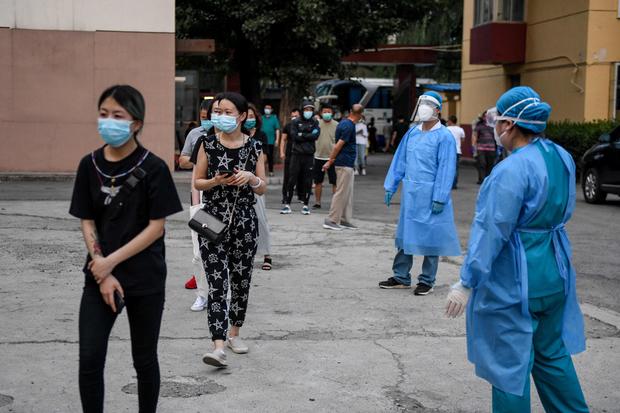
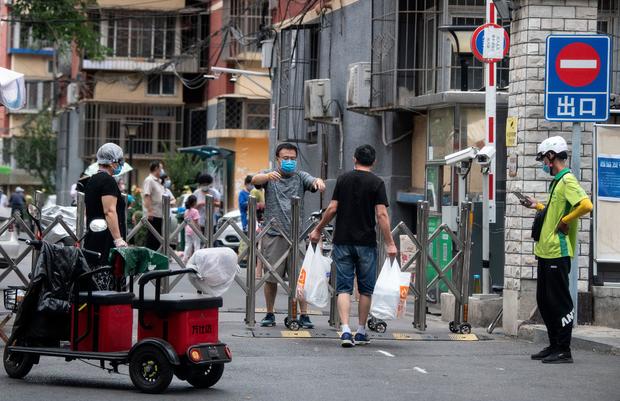
Flights canceled, communities fenced off as coronavirus' return plunges Beijing into "soft lockdown" Now flights are being canceled, schools have been told to shut back down, and entire communities near the market, or with known COVID-19 cases, have been closed off and their residents barred from leaving. So far 29 neighborhoods have been completely fenced off. ............. Across much of the capital, residents have found themselves under what many are calling a "soft lockdown." ......... The national railway operator is allowing passengers to and from Beijing to refund their tickets without fees. All outbound taxi and car-hailing services and most long-distance bus routes from Beijing were canceled. ............ Most people are still able to go to work and socialize, albeit under strict social distancing guidelines. ............ China has halted European salmon imports after the coronavirus was detected on a chopping board used for imported salmon in the Xinfadi market. Chinese experts have said genetic tracing suggests the virus strain now spreading in Beijing may have come from Europe. ............. the outbreak probably really began spreading quietly a month before it was detected ................. the quick reaction should make it controllable. ............. "I can understand Beijing's strict measures — the stricter they are, the better it is for the rest of the country."
